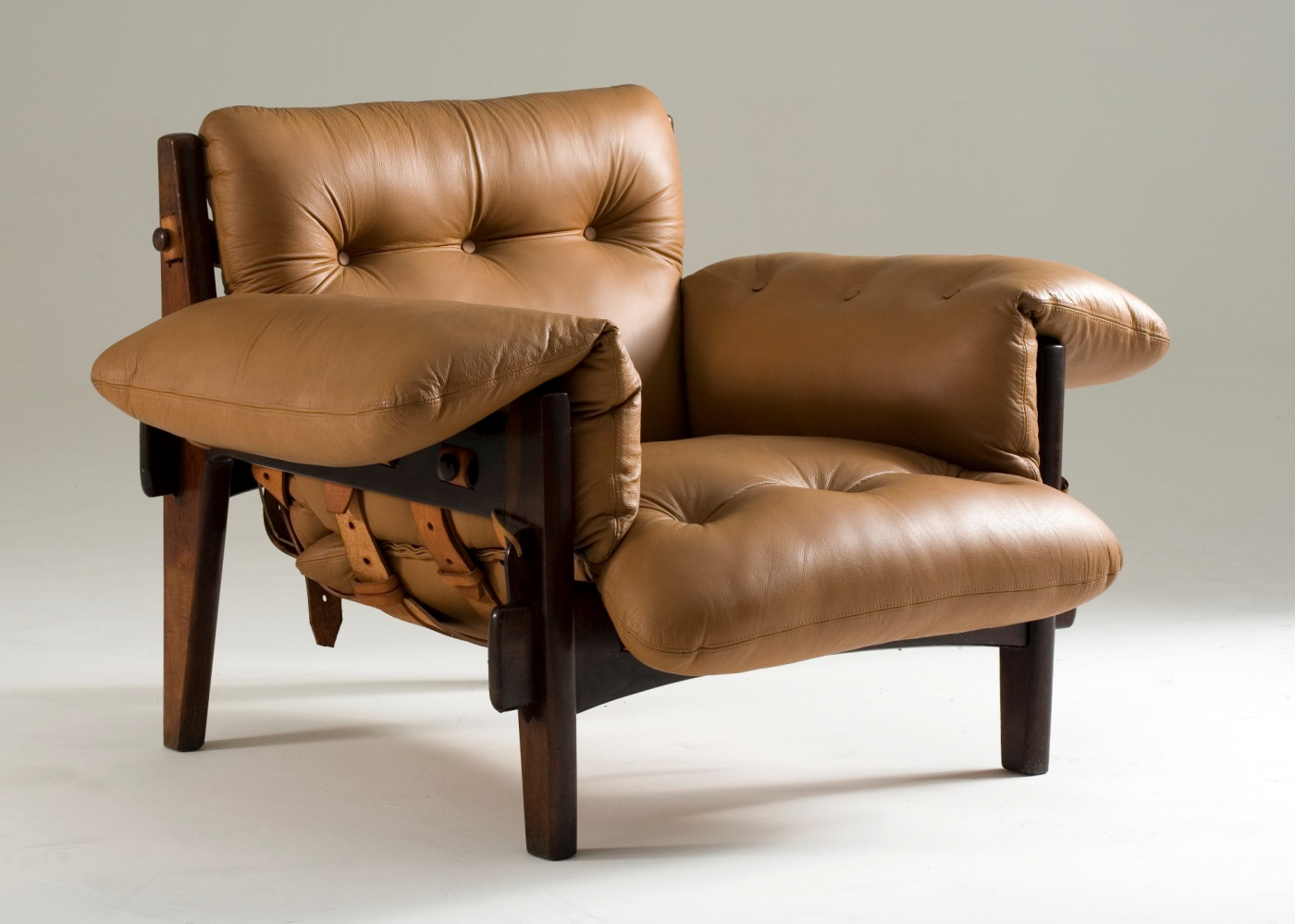
The Sheriff of Rio | Sergio Rodrigues 1927-2014
Sergio Rodrigues, the legendary Rio-based designer, died on 1st September, 2014. Mark C.O’Flaherty remembers the legend, the man and the chairs

Sergio Rodrigues, the legendary Rio-based designer, died on 1st September, 2014. Mark C.O’Flaherty remembers the legend, the man and the chairs

I had dinner at Alex Atala’s D.O.M recently. D.O.M is one of those restaurants that is a Really Big Deal. Tucked away in the shadows of an otherwise nondescript street in the heart of the well-groomed Jardins district of Sao Paulo, it’s definitely South America’s most celebrated restaurant.
Reservations are highly prized, and everything about my visit suggested an extraordinary event rather than supper, from the double-height, Disney-theatrical front-door to the couples frantically taking pictures of their pretty, floral, green tomato gel salads. Instead of a granita palate cleanser, a waiter spins potato and Gruyere dough over each table, and unfurls it into a perfect swirl on each plate.
D.O.M. is very much the new Brazil: luxe, a little avant-garde, with incredible attention to detail. And when you visit this new Brazil, you’ll sit on vintage, modernist Sergio Rodrigues chairs, with hexagonal split cane panels. They’re the same chairs that Chef Atala has at home, and the same chairs sat on by the first dignitaries to visit the sci-fi white concrete domes of Brasilia.

The Diz by Sergio Rodrigues
Brazilian modernism has an organic and seductively tropical element to it that makes it unique. And unlike its international cousins, it hasn’t been done to death. If there’s an equivalent to the Eames lounge chair, it might be Rodrigues’ generously upholstered Poltrona Mole (pictured, top), which first appeared in 1957. When it won first prize at the Concurso Internacional do Móvel in Cantu, Italy in 1961, Arne Jacobson – one of the judges – hailed it as “the only model with up-to-date characteristics… not influenced by passing whims, and absolutely representative of its region of origin”. But even the Poltrona Mole, for all its awards and recognition, hasn’t ventured near the precipice of design cliché. There is no bargain basement “inspired by” copy available online, just the $10,150 model, made to order via Espasso.
My dream home would have a sunken concrete lounge with nothing but Rodrigues furniture in it.

Sergio Rodrigues, by Mark C.O’Flaherty
You can still customer order Rodrigues’ work direct from his atelier in Rio de Janeiro, and select from myriad models, leathers and finishes. Until this week, he’d been there every day: larger than life, with his iconic Yosemite Sam moustache, working on new designs in his Botafogo workshop. When I was last in the city I called him up and went to see him. He didn’t know me from Adam but he invited me over and talked enthusiastically about working in Brasilia with Niemeyer, and what he wanted to do next. The conversation was peppered with raucous laughter. It was one of the best things I did during a week’s stay in Rio. He was such a force of nature that I thought he’d be with us forever.
In the late 1960s, his work became more playful, and he switched from being a master of modernism, to a practitioner of post modernism. His more recent pieces paid homage to both movements. But it was all still distinctively Rodrigues. “I don’t care if people say postmodern or modernist, I just do what I like,” he told me. “When I create a piece, I’m my own client. I always think that if I like it, then someone else will.”
It is passionate and sensual – I look at the Mole chair and I want to spread out and sprawl. It’s louche
Rodrigues’ style was organic and slightly wild. It was passionate and sensual – I look at the Mole chair and I want to spread out and sprawl. It’s louche. If there are shades of the sharpness of Italian modernist Gio Ponti in some of Rodrigues’ work (and indeed in the work of many of the Brazilian modernists), then there are also more savage hints of horn- and tusk-shapes, and pure Amazonian spirit in their wooden frames. “I’ve always worked with wood,” he said. “When I was a child, my uncle was a carpenter, and I studied with him. We had so many types of tropical wood at our fingertips, and it became a major feature in my work. Even if I work in metal, I still add wood to it, because it changes the meaning.”
Most of his early pieces were crafted from jacaranda, but from the 1980s onwards – when the sub-tropical tree neared extinction from over-logging – he shifted to eucalyptus, cinnamon, cedar and ivory palm.
One of the most iconic of his later wooden chairs is the Diz. The best way to experience this particular piece of design is to, as I did, sit on one on a beach-facing balcony at the Fasano hotel in Rio, looking out at the hot bodies rollerblading along the distinctive black and white tiled walkways alongside Ipanema. Every balcony at the hotel has a Diz. Philippe Starck may have sorted out the interior, but Rodrigues – who designed over 1,200 pieces of furniture in his lifetime – gets the sea view. Which, in his home city, is only right. C